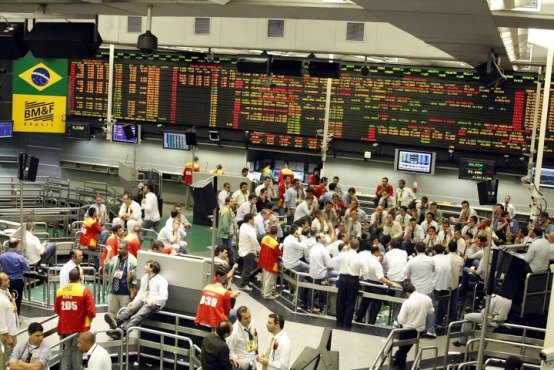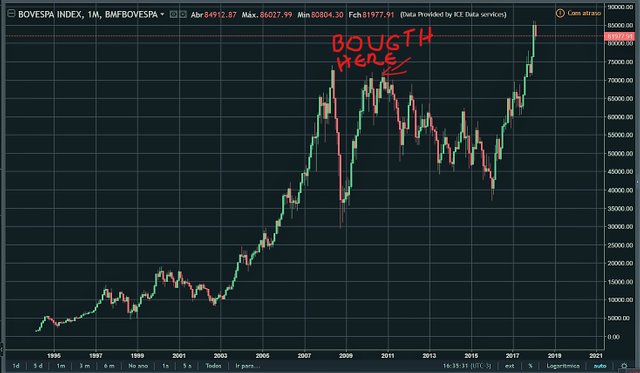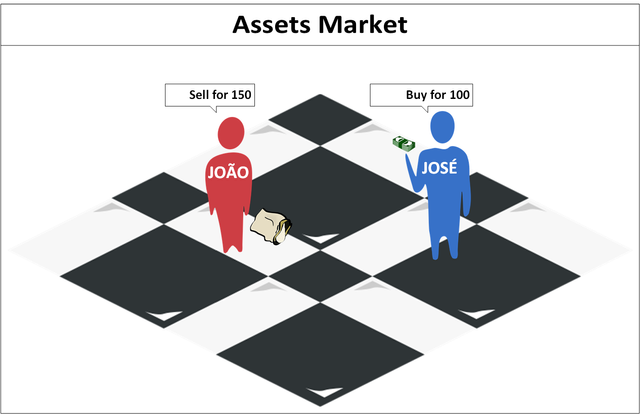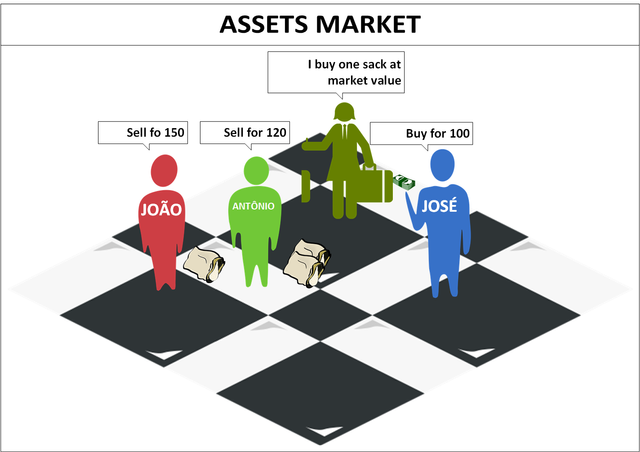Assets Markets: What they are, Where they Live, How they Reproduce [Part 1]
Em português: Mercados de Ativos: O que são, onde vivem, como se reproduzem [Parte 1]

Ever since I received my first work payout I have developed an interest in investments. I always knew that a diversified portfolio would be the key to capital gains beyond the basic correction of savings.
But it was only in the middle of last year (2017) that I realized that I had a passive position in relation to my investments: I chose some funds available at my bank, i made the deposit, and I forgot about that money for a while.
Result: I discovered that I had applied in investment funds at one of the highest prices of the Ibovespa (Brazilian Stock Exchange)

Only at the end of this year these investment funds started to have a positive return after 6 years accumulating losses (except Petrobras, which has not yet recovered what i invested). Then 8 months ago I decided it was time to take a more active stance on my investments, and I began to dig deeper into the knowledge about financial and assets markets.
And today I'm going to tell you a little of what I've learned about these markets.
What are Asset Markets?
In a simple definition: It is a place where people are willing to buy something and people willing to sell it, and the negotiation price is established by each party.
I will illustrate it to facilitate the understanding:
Let's say that João wants to sell a sack of rice, and José wants to buy a sack of rice. Both decide to go to the Stock Exchange to conduct this negotiation, each setting its price to close a deal.

If none of the participants accept the price of each other,then there is no negotiation.
However, this is an open and free market, and so any other person can enter the negotiation. Let's say that Antonio has two sacks of rice, and when he arrives at the Market, he sees the situation above, and decides to sell his sacks of rice cheaper than João.
As his price is lower, he take a place in front of John in the sales line.
Maria arrives in the market wanting to buy rice right away, but even if for some reason she wanted to pay the price of João (150), by the rules of the market she can not do that, and thus closes business immediately with Antônio (120). This action is called in the trade jargon of buy at market.

Then negotiations keep happening as long as the trading session is open, with new participants in both buy and sell sides entering at any time.
Now just replace rice sack with any other asset traded on an exchange, like, stocks, futures contracts, government securities, cryptocoins, etc., and the you basically have how all these markets work.
The difference is only that each asset in the market has its peculiarities and its rules of participation and negotiation, including the order that is considered for entry into the buying and selling queues.
Based on this knowledge it is easier to perceive a fundamental concept of the market that many people do not realize because they are paying attention only in the indicators:
What moves the price of an asset is just the amount of money that is in one of the directions of the market:
- More people buying at market price, the price goes up.
- More people selling at market price, price goes down.
In the example above, when Maria arrives at the market, the price of the rice sack 120. If she buys the two sacks of Antonio's rice the price will rise to 150.
Next week I'll talk about where the Asset Markets live (which are the types of markets that exist in the world)
You have collected your daily Power Up! This post received an upvote worth of 0.35$.

Learn how to Power Up Smart here!